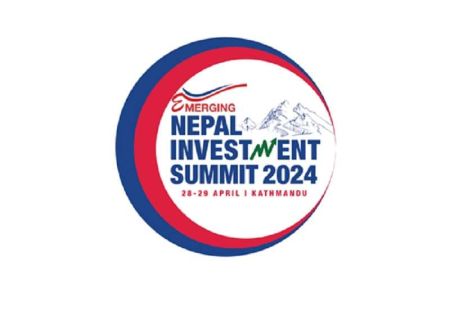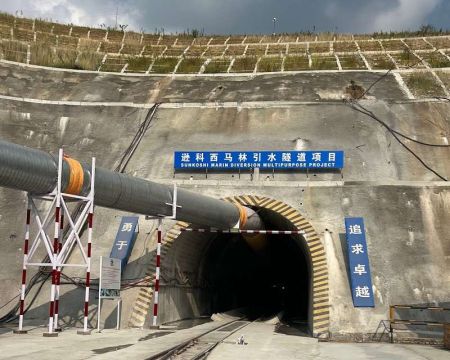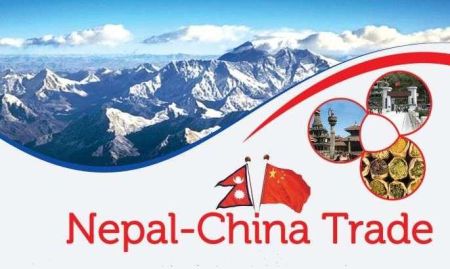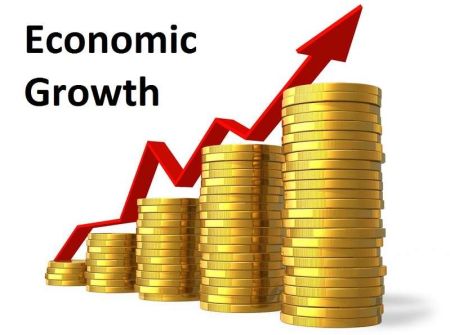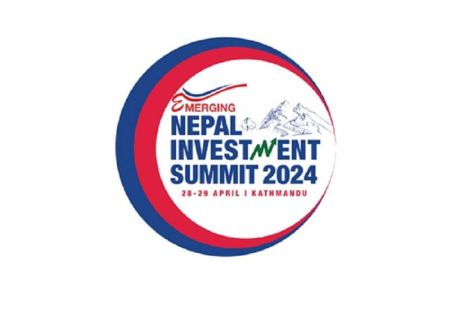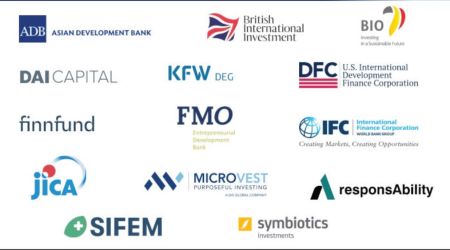By Pinaki Roy
* The Annual Report of the World Trade Organisation (WTO) states that worldwide exports during 2010 registered a growth of 14.5 per cent, the highest since 1950. It also expects this trend to continue to improve in 2011.
* Nepal signed the Trade and Investment Framework Agreement (TIFA) with the United States recently which paves way for the promotion of more comprehensive trade agreements between Nepal and the US in the future.
* The second meeting of Nepal-Tibet Trade Facilitation Committee (NTTFC) – a bilateral talks forum – is being held in Kathmandu from May 8 to 10. The main focus of the talks will be to cut the ballooning trade deficit with China by taking maximum advantage of zero tariff on imports from Nepal offered by China.
Â
While these developments may sound all good, analysing the state of Nepal’s foreign trade over the last  decade or so presents a bleak picture. It’s unfortunate that Nepal has very few products at present that hold any promise of competing in the international market. Add to it the dismal environment of domestic business in the country and the chances of reaping tangible benefits from any agreement in the near future look extremely slim. Nepal’s faltering export scenario has been unable to check an unsustainable trade deficit. The eternal power shortage, fragile law and order situation and transportation woes are among the main impediments to the development of export-oriented sector. These erode the confidence of the private sector. With dwindling confidence of the investors, let alone foreign direct investments, Nepal can’t expect to see domestic investment in the foreseeable future either. In short, Nepal’s economy is in dire straits with grim hope of the growth of export-oriented industries.
decade or so presents a bleak picture. It’s unfortunate that Nepal has very few products at present that hold any promise of competing in the international market. Add to it the dismal environment of domestic business in the country and the chances of reaping tangible benefits from any agreement in the near future look extremely slim. Nepal’s faltering export scenario has been unable to check an unsustainable trade deficit. The eternal power shortage, fragile law and order situation and transportation woes are among the main impediments to the development of export-oriented sector. These erode the confidence of the private sector. With dwindling confidence of the investors, let alone foreign direct investments, Nepal can’t expect to see domestic investment in the foreseeable future either. In short, Nepal’s economy is in dire straits with grim hope of the growth of export-oriented industries.
 decade or so presents a bleak picture. It’s unfortunate that Nepal has very few products at present that hold any promise of competing in the international market. Add to it the dismal environment of domestic business in the country and the chances of reaping tangible benefits from any agreement in the near future look extremely slim. Nepal’s faltering export scenario has been unable to check an unsustainable trade deficit. The eternal power shortage, fragile law and order situation and transportation woes are among the main impediments to the development of export-oriented sector. These erode the confidence of the private sector. With dwindling confidence of the investors, let alone foreign direct investments, Nepal can’t expect to see domestic investment in the foreseeable future either. In short, Nepal’s economy is in dire straits with grim hope of the growth of export-oriented industries.
decade or so presents a bleak picture. It’s unfortunate that Nepal has very few products at present that hold any promise of competing in the international market. Add to it the dismal environment of domestic business in the country and the chances of reaping tangible benefits from any agreement in the near future look extremely slim. Nepal’s faltering export scenario has been unable to check an unsustainable trade deficit. The eternal power shortage, fragile law and order situation and transportation woes are among the main impediments to the development of export-oriented sector. These erode the confidence of the private sector. With dwindling confidence of the investors, let alone foreign direct investments, Nepal can’t expect to see domestic investment in the foreseeable future either. In short, Nepal’s economy is in dire straits with grim hope of the growth of export-oriented industries. Â
Escalating Trade Balance
During the first eight months of the current fiscal year 2010-11, exports have increased to Rs 43.24 billion, an improvement by Rs 2.99 billion over the same period last fiscal year. Meanwhile, imports increased to Rs 252.88 billion, an increase by Rs 4.61 billion over the same period. The trade deficit amounted to Rs 209.64 billion, an increase by Rs 1.61 billion. Imports are expected to continue to increase in more or less the same pattern it is following so far. This indicates that trade deficit is expected to further widen in 2012. Due to some major foreign currencies getting weaker, Nepal’s exchange rate is expected to appreciate which will make exports costlier abroad. Besides, the impact of rising inflation rate in Nepal is likely to make exports more uncompetitive in the next year.
Â
The agriculture sector in Nepal has remained under-developed, with a very low productivity level. At the same time, the industrial sector suffers from a host of uncertainties. The inefficient structures of these important sectors of the economy have not only reduced the competitiveness of the economy but also resulted in a limited production base. It is far below the consumption needs of the people. As a result, Nepal depends heavily on import trade for meeting its large and varied needs. Despite a marginal increase in exports, the painfully slow growth of imports during the last decade doesn’t augur well for the country. Besides, most imports are confined to non productive and consumable items like vehicles, petroleum products and gold that does not directly contribute to economic activities. Therefore, it is an alarming situation and a challenge for the policy makers.
Â
Infrastructural Bottlenecks
The export sector is still plagued by the same problems that have adversely affected the entire economy. Supply-side constraints such as intermittent blockades, labour disputes, access to technology and credit, virtual absence of trade facilitation measures, lack of human capital, power outages and road transport among other infrastructural bottlenecks are eroding Nepal’s competitiveness in the international market. These factors also result in preventing diversification of its export basket.
Â
Large gaps exist in trade efficiency based on indicators such as the cost incurred for the trade and number of days taken to close the deal. Infrastructures like roads, ports, information technology and communications network and other logistics, transit facilities, cross-border connectivity and customs facilities are also in short supply. Nepal is yet to enhance the capacities for trade strategies and negotiations, trade and investment finance and other capabilities related to export. The trade-related institutional, human resource and supply-side limitations constrain Nepal to take advantage from trade by meaningfully participating in multilateral and regional trading systems. Considering the problems, the new initiatives on Aid for Trade (AFT) could help overcome the problems and open up new trade opportunities for Nepal. But again, the said constraints could also impede the country from qualifying for such Aid. Structural reforms and infrastructure investments to reduce transportation and transactions costs are the key to improving the external competitiveness of Nepali products.
Â
Limited Export Items
Another feature of Nepali export is its limited items of export. As major export items like carpets, garments, pashmina and handicrafts are produced mainly in labour-intensive industries, the impact of trade on employment is considered significant. Vegetable ghee along with the products mentioned above constitute a significant part of Nepal’s total export. This indicates high dependency of export on very few products.
Â
In the second half of the 1990s, the growth of export was higher than the growth of import reflecting a positive impact of adopting the liberal economic policies. However, this trend did not continue for long and experts attribute this primarily to the impact of the decade long conflict. Though the competitiveness of the export sector had increased in the early days of the liberalisation period, the policies were rendered ineffective during the conflict and the post conflict transition. As a result, the share of import to GDP has been far greater than that of export for the last decade.
Â
The progress in export has been slow due to a number of national and international events and circumstances. The 10th Plan had emphasised on identifying new exportable products of comparative advantage and improving their quality and export volume. It advocated rectifying the procedural hindrances to product-wise and country-wise diversification of foreign trade. It also looked at enhancing the competitiveness of the trade sector in harmony with the regional and multilateral agreements. The Plan envisaged strengthening institutional capacity of the government, non-government and the private sectors to enhance collection, processing and dissemination of information relating to export promotion. To make foreign trade simpler, more reliable and cost effective reforms were recommended in the areas of laws, regulations, policies, procedures and facilitation. It also recommended that organisational and managerial efforts be strengthened and export promotion prioritised in a coordinated manner. The Plan also talked about mobilising Nepali diplomatic network abroad in promoting foreign direct investment (FDI), export, and the economic interests of the nation so as to accelerate the industrial development and the expansion of export trade.
Â
Quality Certification
Nepal already imports almost seven times more than it exports. The growth prospect of exports and the industrial sector look as gloomy as ever. Most constraints that we face today are non-economic ones. It has been increasingly realised that market access alone does not guarantee flourishing of international trade. Nepal, like any other LDC, lags in trade capacity due to non-availability of sufficient number of exportable products on the one hand and the quantity and quality of available products to meet standards of the importing countries, on the other. Nepal’s trade is faced with constraints on supply side in terms of development of testing and certification facilities, accreditation of laboratories and mutual recognition of test and certification in facilitating trade. The improvement of laboratories and testing facilities in Nepal has, for example, remained an important agenda in Nepal’s trade with India, its largest trading partner.
Â
Trade Barriers
Nepal still pays a very high tariff to access major markets on the one hand and on the other, duty-free and quota-free initiatives have yet to prove fruitful due to hurdles imposed by non-tariff barriers. Non-tariff barriers (NTBs) in the form of regulatory requirements, quota restrictions, administrative procedures and rules of origin (ROO) are of major concern. Due to their technical complexity and non-transparent nature, they are the most difficult barriers to overcome. Standards-related NTBs such as sanitary and phyto-sanitary (SPS) restrictions act as major impediments to Nepal’s exports. Several instances have shown that process of discussions amongst the exporters and importers which results in better information sharing can itself help address more than half of such problems.
Â
Despite Nepal gaining enhanced market access into the developed countries, it cannot take advantage from it until the government and the private sector join hands to expand and diversify the country’s exports. Trade is governed, to a large extent, by trade regulations and related administrative procedures. More often than not, the entry and exit from the market as well as the volume of trade rely on the transparent and simplicity of trade and administrative procedures. A study reveals that submission of unnecessary documents, administrative hassles at custom offices, additional detention charges and untimely delivery of goods increase the cost of transaction in formal trade. These activities and procedures enormously affect the trade affairs. Ultimately, it discourages the business fraternity in carrying out their businesses freely and fairly.
Â
WTO Challenges
The WTO membership has brought both opportunities and challenges to Nepal. The main challenges before Nepal are to fulfill WTO commitments that need strengthening existing external trade institutions and legal mechanism, removal of supply side constraints to transform available market access into trade opportunities and restructuring of industrial sector to make it more competent and contemporary. In total, the benefits of membership depends on Nepal’s ability to identify and take advantage of trading opportunities, fulfill multilateral trade obligations, formulate and pursue development strategies within those framework and above all, defend its economic, financial and trade needs. Nepal could benefit from World Trade Organisation (WTO) only if it increases internal strength and quality of export items.
Â
Nepal finds it difficult to implement some of its WTO commitments. Since the benefits accruing from the implementation of these agreements are much lower than the associated cost of implementation, the resource-strapped Nepali economy cannot take this additional burden. Quite naturally, it is demanding support from its development partners to implement such commitments. The basic objectives of technical assistance for Nepal lies in promoting activities which add value to its production, help export diversification and most crucially to reduce its transport and other infrastructure costs thereby making it easier for businesses to operate.
Â
Evolving Global Trade
The nature of trade is evolving globally. This is reflected in the changing composition of trade, from merchandise to services. This dynamic is largely driven by technological revolutions. While the transport revolution reduced transport costs and facilitated trade in merchandise goods, the information technology revolution has resulted in decreasing communication costs and increasing quality levels, thereby causing trade in services to be the fastest-growing component of global trade.
Â
In addition to natural advantages, the three services sectors – health, education and high-end retail services hold immense export potential from Nepal’s perspective. Nepal has comparative advantages for the export of these sectors which are generally found to be cost effective. The attraction of these services is also due, in part, to a high level of market integration with northern India, if it can take advantage of the open border in the south.
Â
In spite of liberalising the economy and changing trade and investment related laws, Nepal hasn’t been able to derive expected benefits. Trade is a technical subject. The deficiencies in knowledge concerning markets, access to distribution networks and use of the ICT, complicated regulatory procedures of shipments, weak transportation infrastructure and services and insufficient trade financing are major constraining factors. Addressing these problems would involve financial resources, time, efforts, proper management, and technical expertise.
Â
Aid For Trade
The new initiative of the Aid for Trade could be a prime source of funding to enhance competitiveness. However, there is a gap between commitment and disbursement of AFT. Pledges are made through international forums for aid for trade initiatives but the pace of implementation and the disbursement rate is very slow.
Â
Developed countries and development partners coming forward to support product development programmes, development of trade infrastructure like inland clearance depots, container freight stations, special economic zones, roads and other forms of transportation in order to enhance Nepal’s trade capacity is of prime importance. Other possible areas of cooperation include enhancing the quality of infrastructure for test and certification of products, capacity building for trade negotiations and institutional development. All these require adequate technical as well as financial assistance.
Â
Prosperous Neighbours
The multilateral trading system has contributed significantly to the growth in exports that has been aptly exploited by countries like China and India. With respect to the markets created by these neighbouring countries, the disadvantage of Nepal as a land-locked country is significantly reduced because these two are after all, proximate markets. The economies of both the neighbouring countries are increasing enormously and Nepal can benefit or should be able to do so because of this. Despite increased industrialisation and trade activities in China and India, Nepal has failed to benefit from their economic growth.
Â
Nepal’s internal problems such as poor trade policy and implementation, lack of business-friendly labour laws and other rules and regulations, political instability, frequently changing trade and industrial policies, social unrest and chaos, frequent strikes, lockouts and load-shedding are also equally responsible for poor export. The reasons behind the fall in export can also be attributed to erosion of preferences for Nepali goods due to the decreased MFN (Most Favoured Nation) tariff in India. The Government of India has signed several free trade agreements with various countries. It has committed to lower customs duty as a non-LDC member of SAFTA and BIMSTEC free trade area and also announced the Duty Free Tariff Preferences (DFTP) scheme as part of commitments made in the Hong Kong ministerial meeting of WTO. The irony of Nepal’s trade is eminent in respect of decreasing tariff in Nepal. It is obvious that Nepal will continue losing export volume and find itself in a precarious situation in the absence of concrete measures to check and reverse the process of decreasing export.
Â
Nepal’s export to India is increasing at a snail’s pace. The growth rate of export is highly fluctuating. At the same time, import from India is far stable. It implies that import from India is in a better position than export. As the gap between export and import increases, trade deficit soars. The trade deficit with India was Rs 66.4 billion in FY 2005-06 but it has rocketed to Rs 174.4 billion in FY 2009-10. It is alarmingly high for Nepali economy. The major reason for the unfavourable balance of trade on Nepal’s part can be blamed on not finding proper markets for manufactured goods in Nepal, in India. The prominent factors include the inability to compete in the Indian market on the grounds of quality, price, supply capability etc. From a trading point of view, it could be quantitative restrictions and product disqualifications. It is understandable that unless a sizable export of manufactured products fail to find market, the trade balance proportion cannot be reduced. Therefore, finding a proper segment in the Indian market for Nepali products is critical.
Â
Service Sector Emphasis
The Government of Nepal launched Nepal Trade Integration Strategy (NTIS)-2010 last year which seeks to identify and develop key essential products and services to build its export base in a sustainable way. A total of 19 items were selected for driving export promotion. The 12 products and seven services were identified after careful scrutiny of potentiality for development along the value chains and their linkages with poverty alleviation. These products possess immense potentialities of backward linkages within the country. To sustain trade in the future, contributing to overall economic development by making trade more inclusive, increasing employment and government revenue is important. The seven services identified are namely Tourism, Labour Services, IT and BPO Services, Health, Education, Engineering and Hydro Electricity. It has been unanimously felt that Nepal has the potential to perform better in these service sectors provided there is an encouraging working environment.
Â
Trade Facilitation
Trade treaty is only a means and not an end in itself towards enhancing greater market access. The growth of trade basically depends upon the conditions that are created within the national boundary in respect to measures related to investment promotion and improvement in governance. Speedy trade facilitation is the key to success. Trade facilitation at its core aims at developing competitive advantage. Work on trade facilitation like simplification of customs procedures, criteria for procedures of transit and standards verification and transforming policies and rules in accordance with those of its major trading partners India and China, are of immense importance. Improving productivity and strengthening supply capacity remain the basic consideration guiding the development of the commercial sector of the country.
Â
Internal Preparations
Nepal is a country with major potential that needs to be realised and enhanced through various policies and related initiatives. At the same time, it has to address a number of difficulties linked to its logistical, financial and stability related concerns. The multilateral trading system can contribute towards Nepal’s potential gain in many ways. Trade-related aspirations to diversify trade and production bases into dynamic new products and services, integrating trade and trade capacity building policies into national development strategies, maximising benefits through development of effective labour market standards and institutions and striving for an ambitious, comprehensive, balanced, equitable and development-oriented outcome, are vital.
Â
To realise the benefits of the trade agenda, having hassle free market access through reduction of tariff and non tariff barriers, facilitation measures through increased connectivity, customs harmonisation, simplification of trade rules and procedures and efficient trade logistics and the enhancement of supply side capacity, are crucial. With the help of all the benefits – present and potential – Nepal will be in a better position to address the supply-side constraints, achieve better market access and help raise its domestic growth with greater equity. This assures help to increase above 4 per cent growth rate which Nepal has been stuck with, for some time. To increase export, there must be an increment in investment for production, both domestic and foreign, that can positively affect the investment and thereby exports.






